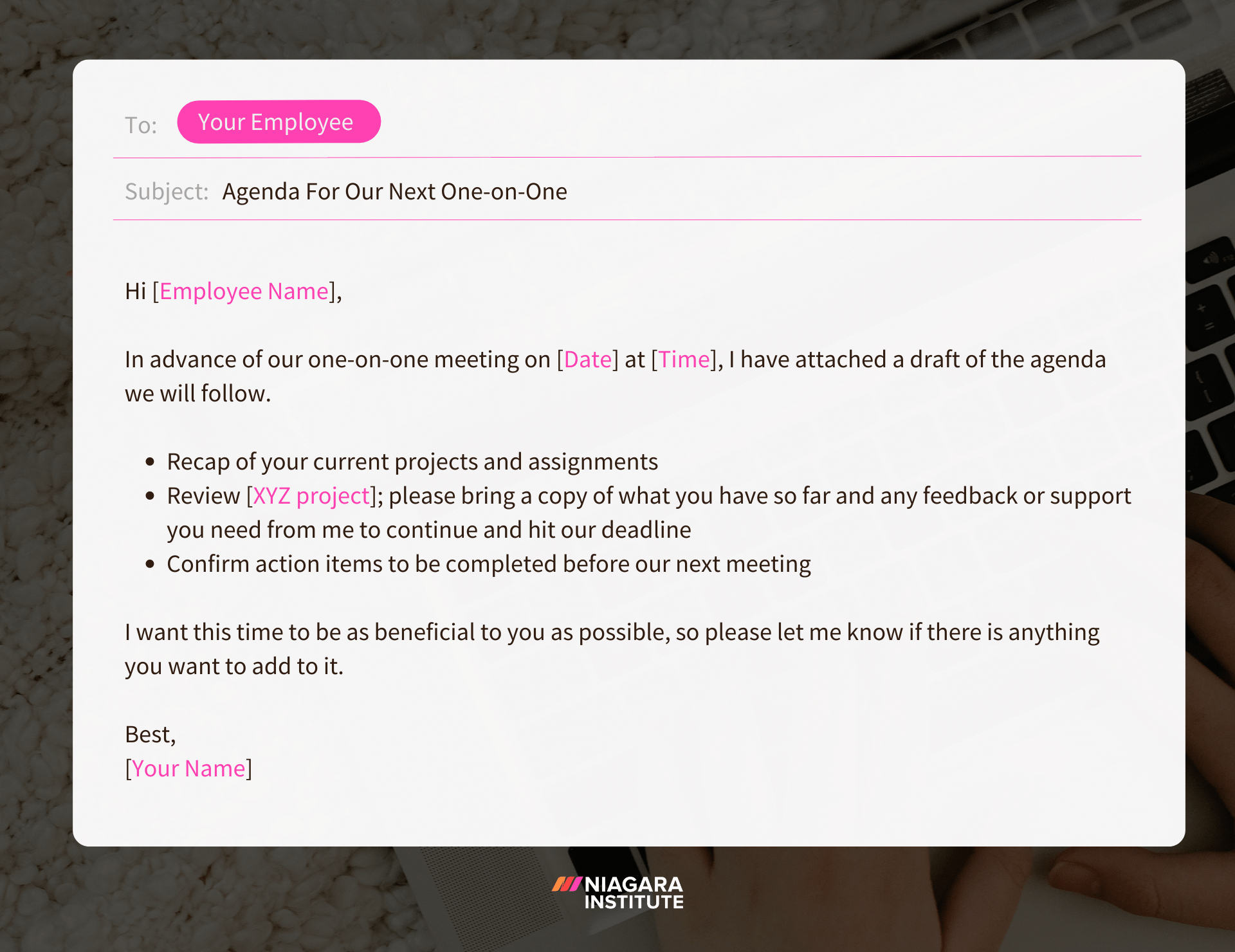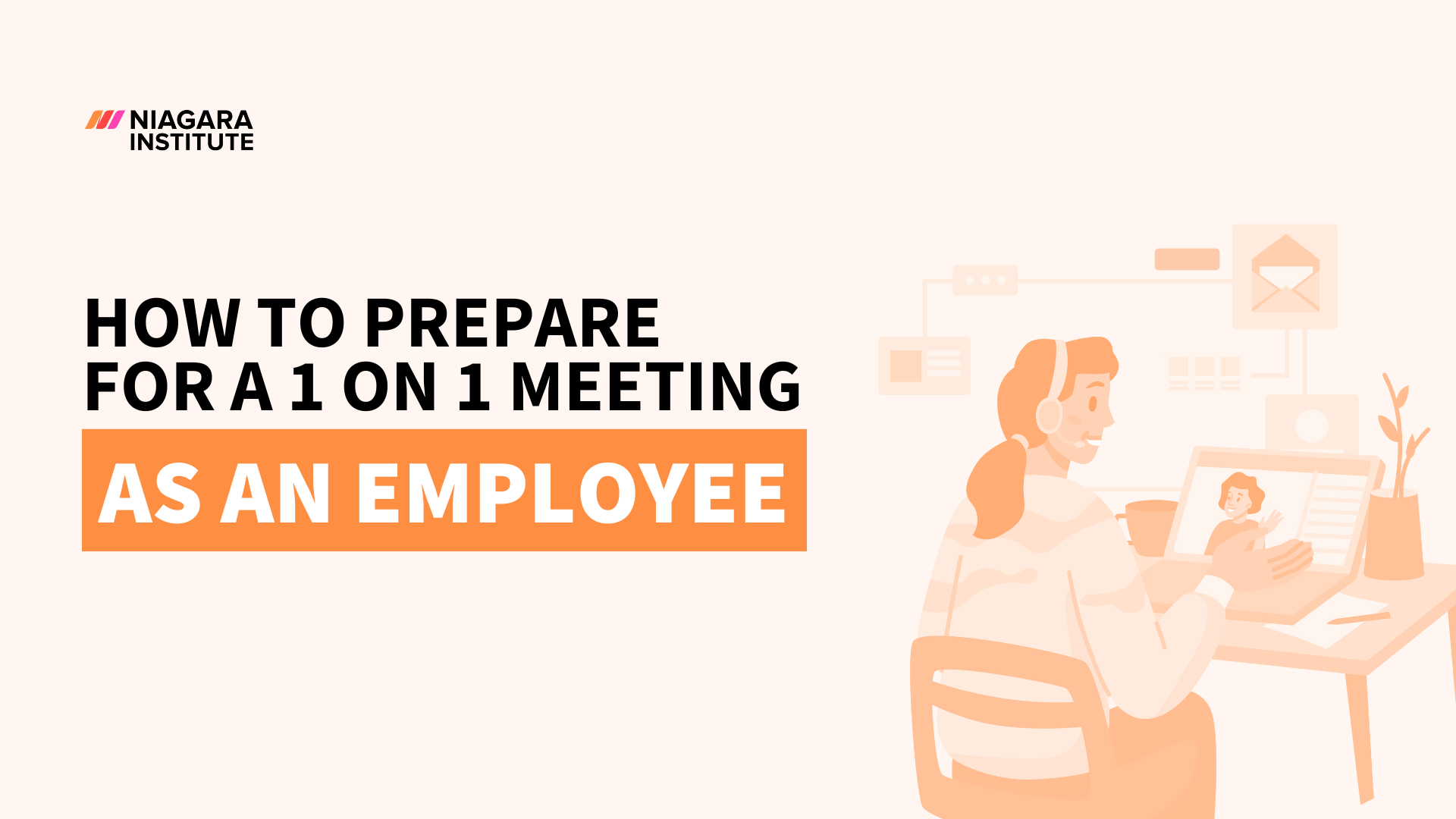5 min read
The Only One-On-One Meeting Template You Actually Need
As a leader, the last thing you want an employee to think when you send an invite for a one-on-one meeting is, “What have I done wrong.” This can...
5 min read
 Michelle Bennett
:
Jun 1, 2023 6:00:00 AM
Michelle Bennett
:
Jun 1, 2023 6:00:00 AM
.png)
No one should go into a one-on-one meeting unprepared. If you do, it can send a message to the person you’re meeting with that you don’t fully respect the time they took out of their calendar to meet with you. So, whether you’re the leader who hosts the meeting or the employee attending it, you both need to do the work beforehand to prepare for your 1 on 1 meeting. In this article, we’ll break down exactly how you should go about doing that. Let’s get started.

When you’re the one leading the meeting, it’s best you come prepared, as the success of any meeting is determined before it ever starts. Your employees will look to you to structure the meeting, plan the agenda, and outline your expectations and how they should contribute - all of which takes time, consideration, and planning. Here are four things to consider, as well as templates and examples to make preparing for the meeting a cinch.
Before you do anything else, you’ll want to determine how you are going to structure your 1 on meeting with employees. While every leader will have their own style, there are three outcomes every leader should try to achieve with their time together. At Niagara Institute, we call them the 3 R’s - Rapport, Review, and Readiness - and these can be the framework for the structure of your 1 on 1 meeting.
Now that you have the structure for your 1 on 1 meeting, it’s now time to prepare for each meeting. There will be some commonalities for each meeting between employees, such as rapport building, but there will also be components that are unique topics for each discussion.
After selecting your questions and reviewing documents and tools, you will have both the foundation and contents for the 1 on 1 meeting from which you can craft the agenda.
 Create a 1 on 1 Meeting Agenda Using a Template
Create a 1 on 1 Meeting Agenda Using a TemplateNow that you have your structure and outline of what you want to discuss, it is time to set the agenda so your employee understands what the meeting will be about and how they can prepare for it. To structure your agenda in a way that is easy to follow and clearly outlines expectations, we’ve created this editable one-on-one meeting agenda template for you to use going forward.
You’ve put a thoughtful time into planning your 1 on 1 meeting and will expect your employee to do the same. To ensure they come to your meeting prepared, send a meeting invite which includes the agenda before the meeting. Best practice states that a meeting agenda should be sent no later than two business days prior to the meeting.
Here is an example of an email you would send ahead of a 1 on 1 meeting regarding the agenda.

To: [Name of Your Employee]
Subject Line: Agenda For Our Next One-on-One
Hi [Employee Name],
In advance of our one-on-one meeting on [Date] at [Time], I have attached a draft of the agenda we will follow.
I want this time to be as beneficial to you as possible, so please let me know if there is anything you want to add to it.
Best,
[Your Name]

How often do you get face-to-face time with your boss where their focus is solely on you? For some people, their 1 on 1 meeting may be the only chance in a week that it happens. That’s why making the most of that time is so important. To do that, you will need to prepare yourself adequately. How exactly do you prepare for a 1 on 1 meeting with your boss as an employee, though? You follow our 1-on-1 meeting with manager step-by-step template.
There is no one-size-fits-all for one-on-one meetings. Every leader will have a slightly different approach and set of expectations. So, before you do anything to prepare for a 1 on 1 meeting, reach out to your boss and ask them what their expectations are. What do they want you to come prepared with? What do they want to accomplish? What will be discussed? By asking for clarification up front, you’ll save yourself the hassle of preparing things your boss has no intention of discussing.
Given that a large portion of your one-on-one meetings will be providing updates to your boss and answering their questions. You don’t want to fumble around on your computer, searching high and low for documents. That’s why as you prepare for your meeting, you will want to familiarize yourself with the current status of your KPIs, goals, tasks, and projects.
Once you know what your boss is looking to discuss in your one-on-one meeting and you have an idea of the status of your KPIs, goals, and projects, it’s time to gather any supporting documents or links. Again, these aren’t things you want to try to find during the meeting, as that will come off as unprofessional and unprepared. So, if you know, they will be discussed or that there’s a chance your boss will ask to see them, keep them somewhere accessible to you at a moment's notice.
You might think you’ll be able to remember everything you want to discuss with your boss during your one-on-one meeting, but in the heat of the moment, things can easily slip your mind. To keep this from happening, write down your talking points and questions and bring that with you to your meeting. If you have an extensive list of things that require action or thought beforehand, you might even want to send it to your boss beforehand.
As you prepare for your 1 on 1 meeting, if you notice that you have a lot of asks or to-do’s for your boss, you may want to proactively write out a list for them that you can leave behind. This is a particularly good idea if you need your boss to give approval, provide feedback, or sign off on something by a specific date or time, as you can highlight that right on the list you provide them.
It’s easy for one-on-one meetings to focus solely on tactics, but this 1 on 1 time with your boss is an invaluable opportunity to converse about more strategic topics, such as your professional development, career plan, and performance. If you want to initiate this type of conversation, you’ll want to come prepared with a few questions related to the topic you want to discuss. To give you an idea of what type of questions you can ask your boss as an employee during a one-on-one meeting, check out this list.

5 min read
As a leader, the last thing you want an employee to think when you send an invite for a one-on-one meeting is, “What have I done wrong.” This can...
.png)
7 min read
Whether you’re an employee attending a one-on-one meeting or a leader hosting a one-on-one meeting, everyone wants to make that time spent as...

8 min read
Leading a new project, forming a new team, or taking over an existing one can be exciting and daunting, and the kickoff meeting is the first...